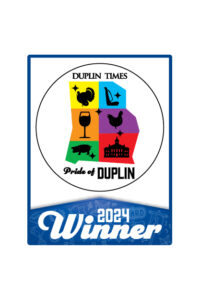
Understanding how to read a golf scorecard is fundamental for golfers and spectators alike. Scorecards not only keep track of performance but also provide details about the golf course layout, helping players strategize and enjoy the game. If you’ve found scorecards a bit overwhelming, this organized guide will make understanding them effortless.
What Is a Golf Scorecard?
A golf scorecard helps players track scores and offers insights into the course. It typically includes the following elements:
- Course Name and Hole Numbers
At the top of the scorecard, you’ll see the name of the golf course along with numbers 1–18, representing the holes in order of play. - Yardage Information
Yardages for each hole are listed beneath the hole numbers. These distances vary depending on the tee box used (explained below). - Tees
Golf courses typically offer various sets of tees, each suited to skill levels or playing preferences. Most common are tees for men, women, and seniors, with some courses offering up to seven different options.
Decoding Symbols on a Golf Scorecard
Symbols on a scorecard provide quick performance visualizations based on the par for the hole. Here’s a breakdown:
- Circles
- A single circle indicates a birdie (1 stroke under par).
- A double circle signifies an eagle (2 strokes under par).
- Squares
- A single square marks a bogey (1 stroke over par).
- A double square means a double bogey (2 strokes over par).
These shapes make it easy for players or spectators to glance at a scorecard and understand a golfer’s performance on any hole.
Handicap Numbers Explained
Handicap numbers enable fair competition among golfers of different skill levels. Here’s how they work:
- What Do Handicap Numbers Mean?
A golf handicap quantifies a player’s skill, with lower numbers indicating more skilled players. - Role on a Scorecard
The “Handicap” (HCP) column ranks holes by difficulty. A hole with a handicap of 1 is considered the hardest, while 18 is the easiest. - How Are They Used?
Handicaps allow golfers to adjust scores for equity. For example, a golfer with a handicap of 10 may deduct one stroke on the 10 toughest holes, resulting in a net score to compare against others.
Tee Box Color Codes and Yardage
To accommodate golfers of all levels, courses include multiple tee boxes. These are often color-coded on the scorecard:
- Color Details
- Blue tees represent forward tees, positioned closer to the hole.
- White tees are the middle option for intermediate players.
- Black tees are positioned the furthest back, designed for experienced golfers seeking the greatest challenge.
- Yardage Numbers
Below each color, you’ll find the yardage for each hole, allowing players to strategize based on their abilities.
For instance, a par-4 hole might be 350 yards from the blue tees, 400 yards from the white tees, and 450 yards from the black tees.

Enhancing Your Golf Experience at River Landing
River Landing, located along the scenic Northeast Cape Fear River, is home to two award-winning golf courses. Designed by renowned architect Clyde Johnston of Hilton Head, South Carolina, these 18-hole championship golf courses highlight the natural beauty of eastern North Carolina while catering to players of all skill levels.
The River Course
Ranked #1 in the region and #20 in the state, the River Course boasts stunning views along the Northeast Cape Fear River. Its thoughtful layout offers five tee boxes for different skill levels. Featuring Champion Bermuda greens and Tifway 419 Bermuda fairways, this course provides a challenging yet enjoyable experience for any golfer.
Key Features of the River Course:
- Five tee boxes for varying skill levels.
- Championship design emphasizing natural beauty.
- A course that challenges seasoned players while remaining accessible to others.
The Landing Course
Ranked #2 in the region and #31 in the state, the Landing Course blends exceptional playability with community-focused design. Like the River Course, it offers five tee boxes with Champion Bermuda greens and Tifway 419 Bermuda fairways. Clyde Johnston’s masterful design showcases the area’s lush woodlands and serene layout, making it a favorite for players of all levels.
Key Features of the Landing Course:
- Championship-level play in a welcoming design.
- A layout tailored for both seasoned players and beginners.
- A peaceful golfing experience in a scenic setting.
Additional Options at River Landing
For golfers seeking faster rounds or a different challenge, River Landing also offers par-3 courses on both the River and Landing layouts. These courses consist exclusively of par-3 holes, perfect for beginners, juniors, or anyone with limited time.
Quick Recap of Key Terms
Here’s a summary of essential scorecard elements as they apply to River Landing’s courses and beyond:
- Hole Number – Indicates playing order.
- Yardage – Distance to each hole based on tee box selection.
- Par – The standard number of strokes for a hole.
- Handicap Numbers – Rankings that reflect hole difficulty.
- Circles and Squares – Visual indicators for scores relative to par.
Why Choose River Landing?
Playing at River Landing enhances your understanding and appreciation of a golf scorecard. With two top-tier courses designed to balance challenging play and accessibility, golfers of all levels can enjoy their experience. By integrating the beautiful natural landscape with championship-level design, River Landing promises memorable rounds for casual and competitive players alike.
Plan Your Visit
Whether you’re a seasoned golfer or just starting out, the golf courses at River Landing offer something special. From selecting the right tee box to leveraging handicap numbers for a fair game, reading your scorecard is a skill made even more rewarding with the stunning features of these courses.
Improve your game and strategize with a deeper understanding of your scorecard. Then, experience River Landing for yourself and discover why its golf courses rank among the best.
Final Thoughts
Reading a golf scorecard is key to enhancing your golf game. From understanding colors and symbols to challenging yourself on courses like the award-winning River and Landing Courses, mastering this skill adds strategy and enjoyment to every round.
When planning your next golf outing, consider visiting River Landing. Whether you’re focused on improving your game or just enjoying a day out on the greens, River Landing combines the art of golf with the beauty of nature for an experience like no other.
Take on the challenge, learn the scorecard, and tee off at River Landing!










